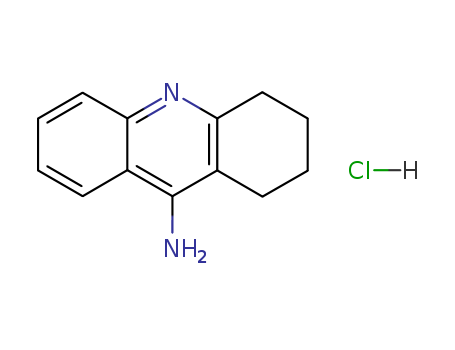Base Information
Edit
- Chemical Name:Tacrine hydrochloride
- CAS No.:1684-40-8
- Molecular Formula:C13H15ClN2
- Molecular Weight:234.728
- Hs Code.:2933990090
- European Community (EC) Number:216-867-5
- NSC Number:759324,72108
- UNII:4966RNG0BU
- DSSTox Substance ID:DTXSID1026112
- Wikidata:Q27259239
- NCI Thesaurus Code:C47742
- Pharos Ligand ID:5L7ZPW8RPXA9
- ChEMBL ID:CHEMBL1677
- Mol file:1684-40-8.mol
Synonyms:1,2,3,4-Tetrahydro-9-acridinamine;1,2,3,4-Tetrahydroaminoacridine;9-Amino-1,2,3,4-Tetrahydroacridine;Cognex;Romotal;Tacrine;Tacrine Hydrochloride;Tenakrin;Tetrahydroaminoacridine;THA



 T,
T, Xn
Xn
